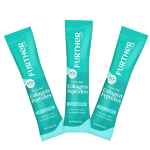By: Ally Owen
One of my favorite healing methods that I use in my holistic practice is Craniosacral Fascial Therapy (CFT). CFT techniques are designed to gently unwind and release fascial strain throughout the body that is accumulated through birth trauma, accidents, injuries, and more. CFT is a perfect complement to my other passions for occupational therapy and holistic nutrition, because it often allows me to address the root cause of so much dysfunction in the body. If your body is still holding onto fascial strain, every other therapy that you try is only going to be a band-aid. In fact, I became a Gillespie Approach Trained Craniosacral Fascial Therapy Practitioner after seeing how CFT helped with my daughter’s tethered oral tissues (also known as tongue tie). Learn more here about what CFT is and how it can help both infants and adults.
What is CFT?
CFT is the work of Dr. Barry Gillespie that combines the principles of craniosacral therapy and myofascial release therapy. Specifically, the craniosacral system (brain, spinal cord, and spine) is surrounded by fascia, which is a thin casing of connective tissue that surrounds and holds every organ, blood vessel, bone, nerve fiber and muscle in place. Fascia envelopes organs, muscles, nerves and even blood, for protection from outside trauma. Additionally, fascia supports the musculoskeletal system and allows us to perform functional activities like walking, jumping, running, or simply changing position.
CFT focuses on the interconnection between the craniosacral system and the fascial system, treating them together in order to have maximum healing benefits. When fascia becomes restricted as a result of illness, injury, or physical/emotional trauma, it can cause tension, restrict craniosacral motion and lead to dysfunction and pain of the surrounding tissues. An example is sciatic pain, which can occur when fascia surrounding the sciatic nerve is restricted and leads to nerve pain. Other fascia-related examples of pain can occur when fascia surrounding the diaphragm causes breathing difficulty or tight fascia surrounding pelvic organs can lead to pelvic floor dysfunction. Fascia surrounding nerves can cause nervous system dysregulation and force an individual into constant fight/flight mode that can cause a host of other health issues.
What does CFT do?
CFT techniques are designed to gently unwind and release accumulated fascial strain, which can allow for optimal mobility of cerebrospinal fluid throughout the body and better brain function. CFT helps release and put slack into the fascial tissue system, which can then help to reduce or eliminate chronic or acute pulling patterns that have created pain. Working slowly and deep into the fascia, CFT helps to free up adhesions, allowing optimal mobility and better brain function. When this system is loose and open with minimal restriction, there is free flow of cerebrospinal fluid to help nourish all parts of the body, cleanse toxins and ultimately relieve pain.
Who can benefit from CFT?
CFT is safe, non-invasive and gentle, so it can be effective for all ages. In general, if a health ailment is caused by tight or restrictive fascia, CFT will help alleviate the negative symptoms associated with such ailment. In fact, CFT can be the ‘missing piece’ in someone’s health journey, especially if they’ve been bounced between doctors without answers as to how to truly improve their health. Conditions for which CFT can be particularly helpful to adults include, but are not limited to: migraines, TMJ, chronic muscle pain, sciatica, sinus issues, depression, and anxiety.
As I learned through my own personal experience, CFT can also be particularly helpful for newborns! Babies sometimes just need a little bit of extra support than adults do because they can’t voluntarily carry their bodies through the full range of motion required to unwind their fascia and tension. Dr. Gillespie uses CFT to help newborns unwind from all the tension that has accumulated in utero, helping babies start their lives in a more regulated state. CFT can help with some “common” diagnoses in babies including reflux, colic, indigestion or difficulty with breastfeeding (latching, suckling, swallowing, taking a bottle). CFT has also been used successfully in children to treat a variety of conditions including asthma, earaches, allergies, etc.
What happens during a CFT session?
During a CFT session, your therapist uses their hands to apply gentle pressure to your head, neck, back (around your spinal column) or on areas of your body where you have symptoms, slowly moving your body through various ranges of motion and helping to release tension. As your body tension unwinds, CFT might feel somewhat similar to a massage and/or stretching, but it’s hard to completely compare it to either because it is something so unique. In fact, since each person has different fascial restrictions, a CFT session won’t look or feel the same for two different people. Generally, it should feel like you’re stretching or loosening tight muscles; you should find it deeply relaxing! CFT shouldn’t hurt any more than a muscle stretch ‘hurts’ – if it is more uncomfortable than that, please inform your practitioner and they will adjust their pressure and/or technique.
I hope this has helped to explain CFT for you and that you now have a deeper understanding of this incredible treatment modality that helps so many people heal and feel well. You can learn more about CFT and the work that I do on my website: Livefreelynourished.com
ABOUT ALLY OWEN
I am an Occupational Therapist, Holistic Nutritionist, and Gillespie Approach Trained Craniosacral Fascial Therapy Practitioner. I am passionate about blending all of my experience and interests in a way that empowers you on your journey to live a freely nourished lifestyle full of nourishing foods and participating in nourishing activities while feeling your absolute best. Blending my passions of occupational therapy and holistic nutrition helps me to look at you as a whole person that is comprised of dynamic physiological needs that interact with your environment in ways that either promote or impede wellness.
Want to read more?

























